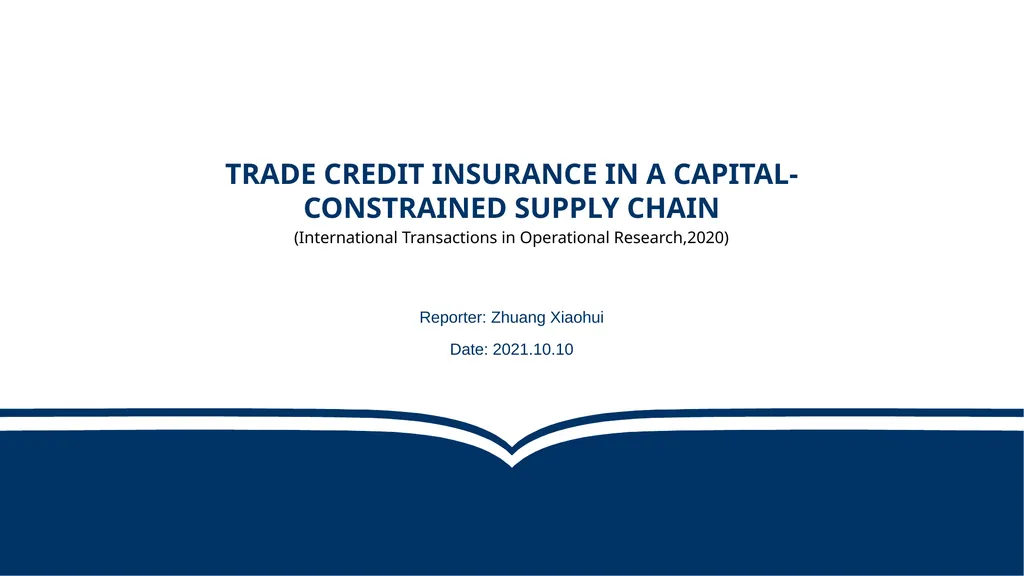
Trade credit insurance in a capital-constrained
Author: ellena-manuel | Published: 2025-06-27
Description: Trade credit insurance in a capital-constrained supply chain (International Transactions in Operational Research,2020) Reporter: Zhuang Xiaohui Date: 2021.10.10 CONTENTS Introduction 2. Literature review 3. Model description 4. Model of an
Download Presentation
Download the PPT/PDF: Download
Transcript:
Loading transcript…